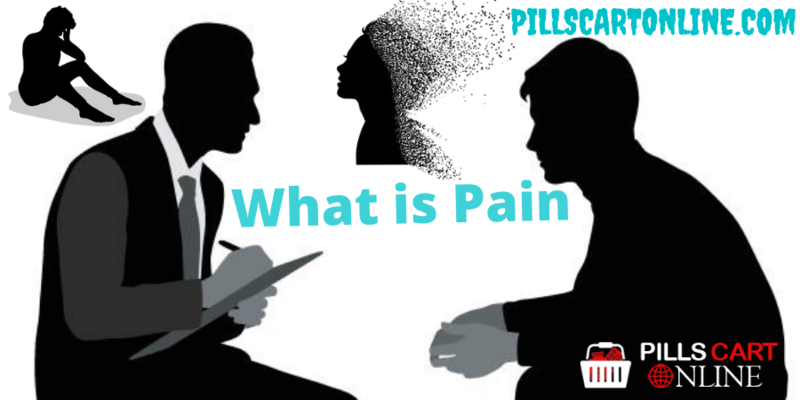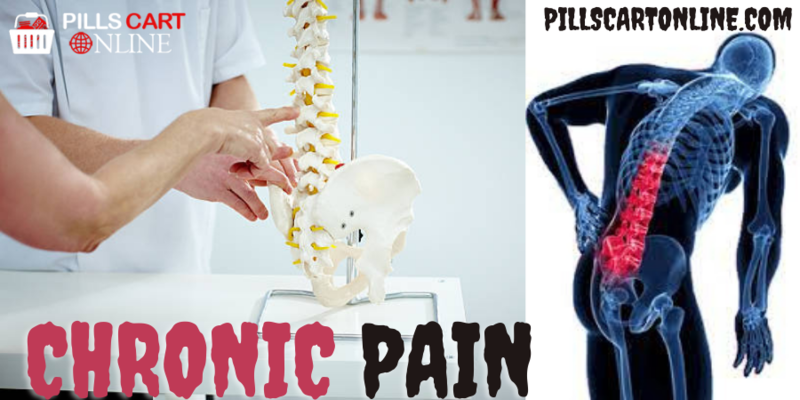Defining body pain
Pain is an unpleasant sensation that can limit a person’s capabilities and abilities to follow a daily routine. It often acts as an early warning signal to alert you that something is not right with your body. The widely accepted definition of pain was developed by the International Association for the Study of Pain: “Pain is an unpleasant sensory and emotional experience that is associated with actual or potential tissue damage or described in such terms.”
Body pain can range from mild, localized discomfort to agony. It can be acute and short-lived or become a chronic long-term problem. Acute pain has a protective function for humans, it teaches us to avoid bodily damage or potentially damaging situations and protects the injured body part while it heals.
Body pain is a common occurrence and can sometimes affect our everyday routines. If pain remains untreated or treated incorrectly, it may become chronic. If this happens, you should consult your doctor. You can learn more about pain types (“typology of pain”).
Why do we experience pain?
Pain can be an uncomfortable feeling and some people go to great lengths to figure out how to relieve pain. If we couldn’t feel pain, we would be unable to avoid repeated injury or permanent damage to our bodies. Pain evolved as a defense mechanism that alerts us to an injury, thus allowing us to protect our bodies.
Pain is controlled by the nervous system and is a very complex process. It occurs when an external stimulus, for example, touching a hot pan, triggers receptor nerve cells to send messages through your spinal cord to your brain. These receptors can sense heat, cold, light, touch, pressure, and pain. Pain can bring about other physical symptoms, like nausea, dizziness, and weakness.
Often, the first impulse when experiencing body pain is to stop moving. Many believe that rest will help recovery, but in fact, sometimes, moderate movement can support a quicker recovery.
What is pain, and how do you treat it?
Pain is an unpleasant sensation and emotional experience usually caused by tissue damage. It allows the body to react to and prevent further tissue damage.
People feel pain when a signal travels through nerve fibers to the brain for interpretation. The experience of pain is different for every person, and there are various ways to feel and describe the pain. This variation can, in some cases, make it challenging to define and treat pain.

Pain can be short- or long-term and stay in one place or spread around the body.
In this article, we look at the different causes and types of pain, ways to diagnose it, and how to manage the sensation.
Causes
People feel pain when specific nerves called nociceptors detect tissue damage and transmit information about the damage along the spinal cord to the brain.
For example, touching a hot surface will send a message through a reflex arc in the spinal cord and cause an immediate contraction of the muscles. This contraction will pull the hand away from the hot surface, limiting further damage.
This reflex occurs before the message reaches the brain. Once the pain message arrives, it causes an individual to feel an unpleasant sensation — pain.
The brain’s interpretation of these signals and the efficiency of the communication channel between the nociceptors and the brain dictate how an individual experiences pain.
The brain may also release feel-good chemicals, such as dopamine, to counter the unpleasant effects of pain.
Types
Acute pain
This type of pain is generally intense and short-lived. It is how the body alerts a person to an injury or localized tissue damage. Treating the underlying injury usually resolves acute pain.
Acute pain triggers the body’s fight-or-flight response, often resulting in faster heartbeats and breathing rates.
There are different types of acute pain:
- Somatic pain: A person feels this superficial pain on the skin or the soft tissues just below the skin.
- Visceral pain: This pain originates in the internal organs and the linings of cavities in the body.
- Referred pain: A person experiences visceral pain at a location other than the source of tissue damage. For example, people often experience shoulder pain during a heart attack.
Chronic pain
This type of pain lasts far longer than acute pain, and there is often no cure. Chronic pain can be mild or severe. It can also be continuous, such as in arthritis, or intermittent, as with a migraine episode. Intermittent pain occurs on repeated occasions but stops between flares.
The fight-or-flight reactions eventually stop in people with chronic pain, as the sympathetic nervous system that triggers these reactions adapts to the pain stimulus.
If enough cases of acute pain occur, they can create a buildup of electrical signals in the central nervous system (CNS) that overstimulate the nerve fibers.
This effect is known as “windup,” which compares the buildup of electrical signals to a wind-up toy. Winding a toy with more intensity leads to the toy running faster for longer. Chronic pain works in the same way, which is why a person may feel pain long after the event that first caused it.
Describing pain
There are other, more specialized ways of describing pain.
These include:
- Neuropathic pain: This pain occurs following injury to the peripheral nerves that connect the brain and spinal cord to the rest of the body. It can feel like electric shocks or cause tenderness, numbness, tingling, or discomfort.
- Phantom pain: Phantom pain occurs after the amputation of a limb. It refers to painful sensations that feel as though they are coming from the missing limb.
- Central pain: This type of pain often occurs due to infarction, abscesses, tumors, degeneration, or bleeding in the brain and spinal cord. Central pain is ongoing, ranging from mild to extremely severe. People with central pain report burning, aching, and pressing sensations.
Knowing how to describe pain can help a doctor provide a more specific diagnosis.
An individual’s subjective description of the pain will help the doctor make a diagnosis. There is no objective scale for identifying the type of pain, so the doctor will take a pain history.
They will ask the individual to describe:
- the character of all pains, such as burning, stinging, or stabbing
- the site, quality, and radiation of pain, meaning where a person feels the pain, what it feels like, and how far it seems to have spread
- what factors aggravate and relieve the pain
- the times at which pain occurs throughout the day
- its effect on the person’s daily function and mood
- the person’s understanding of their pain
Several systems can identify and grade pain. However, the most important factor in getting an accurate diagnosis is clear communication between the individual and their doctor.
Other indicators of pain
When people with cognitive impairments cannot accurately describe their pain, there can still be clear indicators. These include:
- restlessness
- crying
- moaning and groaning
- grimacing
- resistance to care
- reduced social interactions
- increased wandering
- not eating
- sleeping problems
The doctor will either treat the underlying problem, if it is treatable or prescribe pain-relieving treatment to manage the pain.
Doctors will treat different types of pain in different ways. A treatment that is effective against one type of pain may not relieve another.
Acute pain treatment
Treating acute pain often involves taking medication.
Often, this type of pain results from an underlying health issue and treating it may relieve the pain without the need for pain management. For example, if a bacterial infection is causing a sore throat, antibiotics can treat the infection, easing the soreness as a result.
Acetaminophen
Acetaminophen is a type of analgesic, or pain reliever. It is an active ingredient in hundreds of trusted sources of medications, including over-the-counter and prescription drugs.
Often known by the brand name Tylenol, acetaminophen can relieve pain and fever. Combined with other ingredients, it can help treat allergy symptoms, coughs, flu symptoms, and colds.
Doctors often prescribe drugs that contain acetaminophen and other ingredients to treat moderate to severe pain.
However, when taken in higher doses, acetaminophen can cause serious liver damage. People should never exceed the recommended dosage.
Opioids can cause dangerous side effects in people with certain chronic diseases. For instance, they can cause respiratory depression, which can exacerbate the symptoms of COPD.
Chronic pain treatment
A range of nondrug therapies can help relieve pain. These alternatives to medication may be more suitable for people experiencing chronic pain.

These therapies include:
- Acupuncture: Inserting very fine needles at specific pressure points may reduce pain.
- Nerve blocks: These injections can numb a group of nerves that act as a source of pain for a specific limb or body part.
- Psychotherapy: Chronic pain often reduces the enjoyment of everyday activities and makes working difficult. Also, studies have found that chronic pain can lead to depression, and depression intensifies chronic pain. A psychotherapist can help a person implement changes to minimize the intensity of pain and build coping skills.
- Transcutaneous electrical nerve stimulation (TENS): TENS aims to stimulate the brain’s opioid and pain gate systems, thus providing relief.
- Surgery: Various surgeries on the nerves, brain, and spine are possible for treating chronic pain. These include rhizotomy, decompression, and electrical deep brain and spinal cord stimulation procedures.
- Biofeedback: Through this mind-body technique, a person can learn to control their organs and automatic processes, such as their heart rate, with their thoughts more effectively. Virtual reality may now play a role in the use of biofeedback in pain management, according to 2019 researchTrusted Source.
- Relaxation therapies: These include a wide range of controlled relaxation techniques and exercisesTrusted Source, mostly in the realm of alternative and complementary medicine. A person can try hypnosis, yoga, meditation, massage therapy, distraction techniques, tai chi, or a combination of these practices.
- Physical manipulation: A physiotherapist or chiropractor can sometimes help relieve pain by manipulating the tension from a person’s back.
- Physical therapy: Physical therapy exercises can aid in mobility and may help relieve chronic pain.
- Heat and cold: Using hot and cold packs can help. People can alternate these or select them according to the type of injury or pain. Some topical medications have a warming effect when a person applies them to the affected area.
- Rest: If pain occurs due to an injury or overworking a part of the body, rest may be the best option.
With adequate pain management, it is possible to maintain daily activities, social engagement, and an active quality of life.

